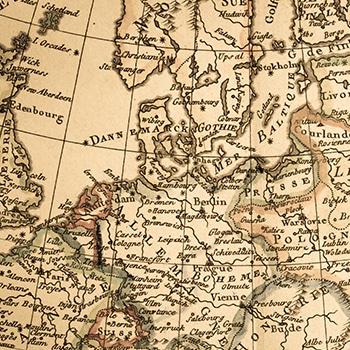The origins of kohlrabi are a bit of a mystery, it’s true. From what we can tell it is actually one of our newest vegetables, with reliable references to it only beginning 500-700 years ago. We do know it is one of northern Europe’s only homegrown vegetables. As part of the brassica family, it is descended from wild cabbage, along with other table favourites like Brussels sprouts, broccoli, cauliflower, and kale.
Kohlrabi has a milder and sweeter taste than you would expect from its slightly alien appearance. It is wonderful roasted and crispy as a side to your joint of beef; you can grate it into a light summer coleslaw; it brings a sweet contrast to a rich and spicy curry; or it’s even great just sliced thinly and eaten raw in your lunchtime sandwich or salad.


Like all brassicas, kohlrabi are packed full of nutrients and minerals such as copper, potassium, manganese, iron, and calcium, as well as vitamins, such as vitamin C, B-complex vitamins, vitamin A, and vitamin K.
Eating it will lend support to many important bodily processes such as good digestion, circulation, vision health, bone strength, nerve function, and more. It’s simple: kohlrabi is good eating.
And besides all of that goodness, it’s really easy to grow at home. It is hardier than most brassicas, more disease resistant, and can be as little as 10 weeks from sowing to harvesting. So, bottom line, there really is no excuse not to have kohlrabi in your garden this year.
Sowing
If you are sowing under a cloche you can start in early March usually, and you can continue sowing from mid-August to early-September, depending on what part of the country you live in. Sow every few weeks for a continuous crop.
Kohlrabi likes a sunny spot best, but can cope with dappled shade. They will be happy in a light, fertile, free draining soil. If using a cloche, put it in place a week before sowing to warm the soil, and to avoid disease don’t plant where other brassicas were grown last year.
To prepare your bed, dig in plenty of well-rotted organic matter, bring the soil to a fine tilth, and then rake in some general purpose fertiliser. If your soil is quite acidic you will need to add lime a few weeks before sowing, or otherwise grow in containers. Kohlrabi is smaller than most brassicas and can live in shallower soil, so it does well in raised beds and containers.
Sow seeds, 1cm (½in) deep in rows 30cm (12in) apart, cover and water.


Growing
Weeding is important, especially when the plants are young. Weed by hand to avoid damaging the root of your young plants, and using a mulch between rows can help a lot.
Although kohlrabi are more drought resistant than most brassicas, the flavour and texture will suffer if they dry out. Water regularly, especially before the onset of a drought, if you don’t want tough, woody stems.
Pigeons can be a problem with young plants, so netting or fleece is a good idea, and it will also protect from cabbage root fly.
When seedlings are 2.5cm (1in) tall, or the first adult leaves appear, it’s time to start thinning them. You should aim to leave a final spacing of 15cm (6in) apart.
If your soil is really poor apply more fertiliser halfway to harvest. A liquid fertiliser may be easier to apply at this point, but if you want to use a granular type just tickle it into the surface of the soil with a hand fork.
Harvesting
Start harvesting when the swollen stems of your plants are golf-ball size, but leave most of them to grow. There are a couple of cultivars, such as Gigante and Superschmelz, that can grow to huge sizes without losing their flavour, but for most varieties be sure to harvest them by the time they are tennis-ball size or they will become woody and hot-flavoured.
Pick some of the young leaves to throw into salads and stir fries, but never take more than a third of the foliage. Adult leaves will need to be cooked to eat as they become tougher.
Your kohlrabi stems can be harvested from May through to mid-December, though you may want to bring the cloches back out in mid-October to speed the final crops along. Purple varieties are hardier, making them better for later in the year.


Quirky Tip
- Wrapping kohlrabi in a damp towel in the fridge will help it keep for up to two weeks. Otherwise it will usually last less than a week.
Fun Facts
- Most people think that kohlrabi is a root vegetable, but it is actually the swollen stem that we eat.
- The name kohlrabi actually means cabbage turnip in German, as it descends from cabbage and the bulbous stem that we eat looks a bit like a turnip.
Varieties
- Purple Vienna: An extremely versatile heirloom variety with a mild and slightly nutty flavour.
- Superschmelz: This mild, sweet tasting white cultivar, remains tender whatever the size.
- Kongo AGM: A great all-rounder. Fast growing, sweet, juicy and give a high yield.

Leave A Comment